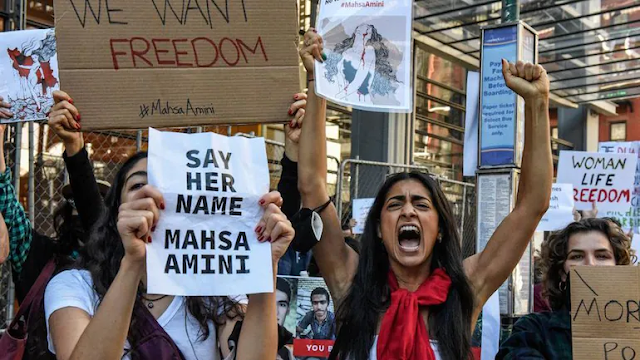Iranian Govt. stays quiet as economic condition continues to deteriorate
On September 17, countrywide protests were sparked by the unfortunate death of Mahsa Amini, an Iranian woman detained by the so-called "morality police" of the Islamic Republic. Similar to earlier occurrences that led to mass protests, such as the downing of a Ukrainian airliner by Iran in 2020, the authorities first claimed that they were to blame for the crisis.
Instead, the media apparatus of the state began a ferocious disinformation campaign, claiming that Mahsa's underlying medical issues were to blame for her demise. However, when demonstrations persisted, the Islamic Republic adopted what has come to be known as its traditional strategy: "maximum suppression," using all forms of violence and imprisonment to put an end to the protests.
For at least the past ten years, there has been an increase in discontent in the Islamic Republic. However, a year into Ebrahim Raisi's presidency, his administration, which stands for the ultra-conservative aspects of the 1979 revolution, advanced a contentious set of social programs that contributed to the recent wave of protests.
In particular, the administration accelerated the implementation of a social engineering plan that included creating a "national internet" and the "restoration of the hijab" as its top priorities. This was done in response to the failure of the government's economic policy as well as Iran's continued international isolation as a result of its uncompromising stance in the nuclear talks.
Iran's hardliners, including those at the Office of the Supreme Leader and the Center for the Islamic-Iranian Model of Progress, have long debated these concepts. However, the underlying rejection of the principles held by the majority of Iranians, who do not belong to the conservative camp, is what made these policies so fundamental to the current scenario.
Iranian authorities have sought to unite the entire people under a state-driven ideology and way of life rather than acknowledging the pluralism of Iranian society. As a result, since Raisi took office as president, social freedoms in Iran have been increasingly constrained.
As a result, the Islamic Republic is currently seeing a level of the divide between the state and society that has never been witnessed before, and the government's ability to influence the populace is rapidly dwindling.
As the core of the Islamic Republic's followers has diminished, discontent has grown and optimism about the possibility of reform has diminished. Nowadays, most people believe that the only effective method to effect change is through street protests, especially the emerging Generation Z.
However, the security establishment in Iran continues to believe that their tried-and-true methods of repression are efficient. The Islamic Republic's authorities always prefer to move up the ladder of escalation rather than reevaluate their strategies, regardless of the situation, whether they are dealing with domestic unrest or foreign criticism of their nuclear program. They think that by applying further pressure, their adversaries will incur expenses that make it unreasonable for them to continue to oppose Tehran.
Due to this obstinate stance, security personnel has brutally attacked thousands of Iranians in the streets of Iranian cities, killing scores of them. However, as long as the Iranian leadership's members continue to view their current course of action as essential to securing their grip on power, there will be very little chance for change within that organization.



Comments
Post a Comment